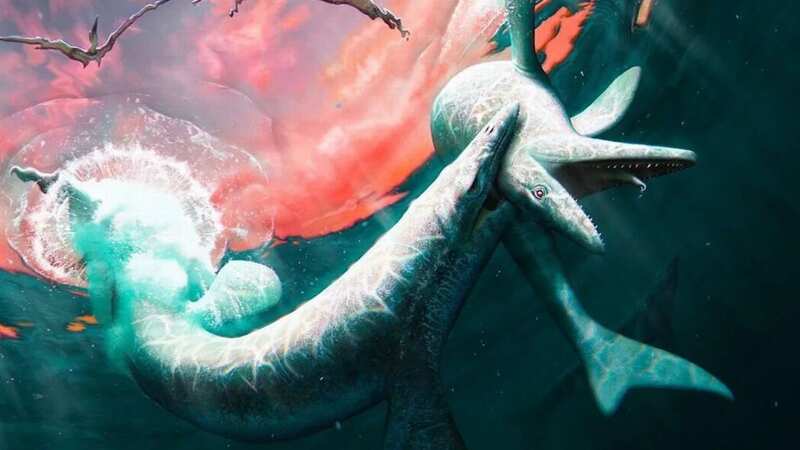Terrifying 24-foot sea monster discovered after eight years of research

Scientists have discovered evidence of a terrifying sea monster species that could grow up to 24 feet long.
The discovery is a new type of mosasaur, an extinct large, carnivorous aquatic lizard. It has been named Jormungander Walhallaensi, after a sea serpent from Norse mythology. The monstrous creature is believed to have lived during the late Cretaceous period, between 145.5 and 65.5 million years ago.
The announcement comes after scientists spent more than eight years studying a fossil discovered in 2015, in Walhalla, North Dakota, US. The specimen ws impressively well-preserved , with nearly all the skull, jaws and spine intact, along with a large number of vertebrae.
The team of researchers was finally able to confirm that this is a new species after years of extensive analysis and surface scanning. The fossil has been described as having “transitional” traits between two other mosasaur species. It forms a link between the Clidastes species, a smaller mosasaur, and the Mosasaurus, a larger species that could grow to nearly 50 feet long.
The North Dakota specimen was about 24 feet long and has flippers, a shark-like tail and “angry eyebrows” caused by ridges on the skull, researchers said. Mosasaurs are believed to have gone extinct during the asteroid strike that killed the dinosaurs, enjoying their heyday between 100 and 66 million years ago.
 Mum's touching gesture to young son who died leaves Morrisons shopper in tears
Mum's touching gesture to young son who died leaves Morrisons shopper in tears
The species is more closely related to snakes and lizards than dinosaurs. “If you put flippers on a Komodo dragon and made it really big, that’s basically what it would have looked like,” said Amelia Zietlow, lead author of the study and PhD student in comparative biology at the American Museum of Natural History’s Richard Gilder Graduate School.
Research suggests the Jormungandr existed before the Mosasaurus, dating back 80 million years. “This fossil is coming from a geologic time in the United States that we don’t really understand,” said co-author Clint Boyd, from the North Dakota Geological Survey. “The more we can fill in the geographic and temporal timeline, the better we can understand these creatures.”
Read more similar news:
Comments:
comments powered by Disqus































